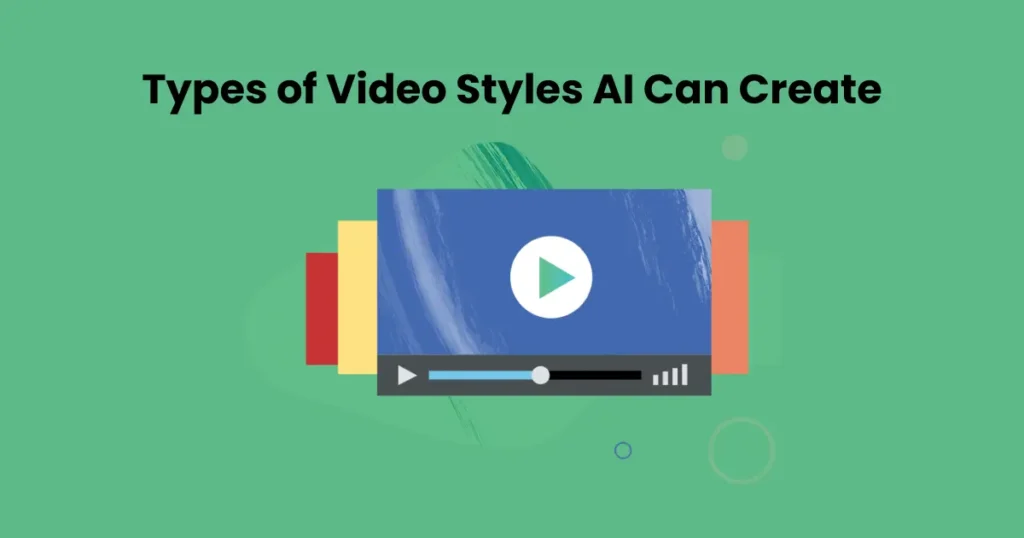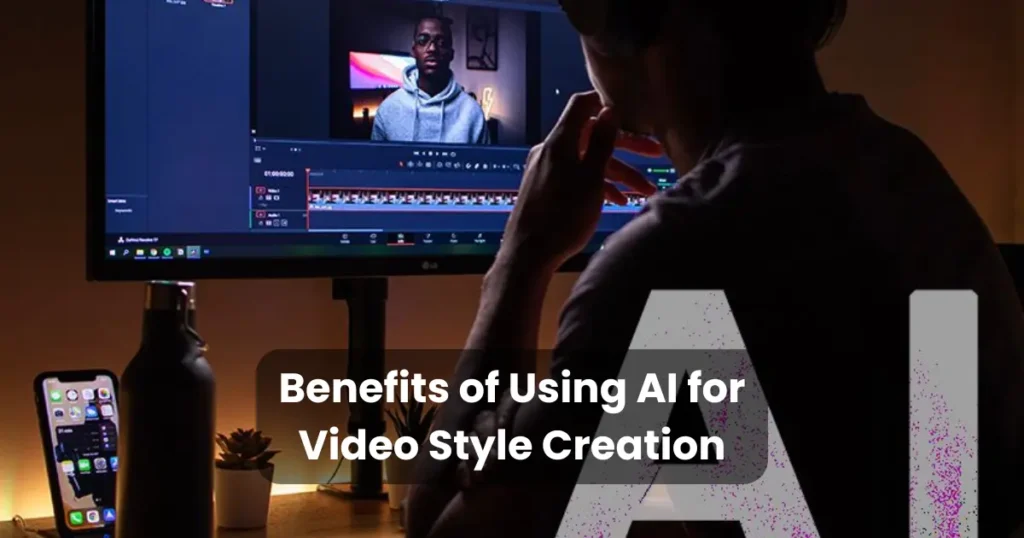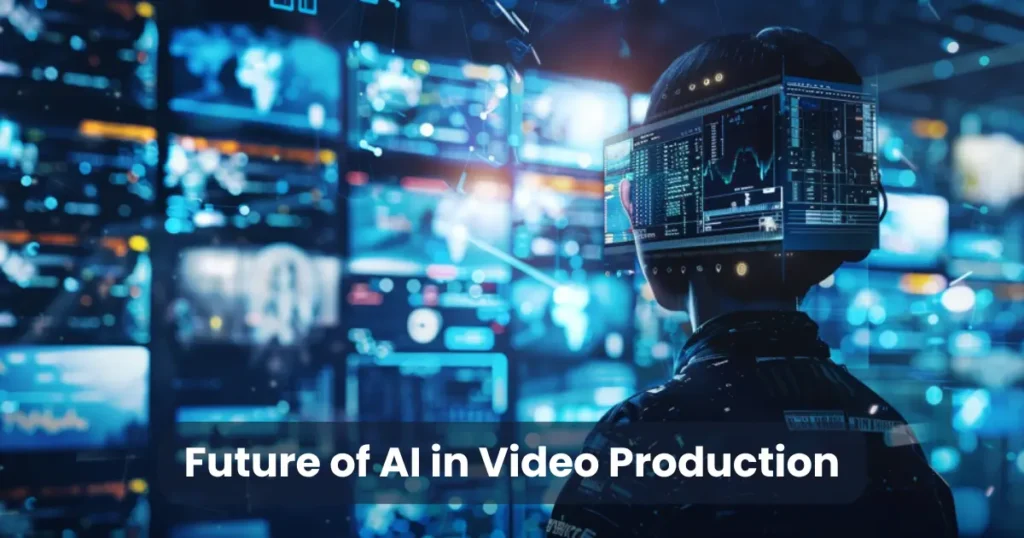
AI Content Creation
How AI Can Create Different Video Styles

Contents
In today’s rapidly evolving digital world, understanding how AI can create different video styles is becoming increasingly important for content creators, marketers, and educators. As artificial intelligence advances, its impact on video production grows more significant transforming what once took days into tasks that now require only minutes. With AI, not only can video creation be automated, but it can also be customized to suit a wide range of styles, tones, and purposes.
Moreover, thanks to deep learning algorithms and vast training datasets, AI tools can now analyze user input, detect contextual themes, and generate stylistically accurate videos. Whether you’re aiming for a cinematic feel, an animated explainer, or a social media-ready short, AI makes it all possible efficiently and creatively. As a result, video production has entered a new era where human creativity is amplified by machine intelligence.
Understanding Video Styles
Before exploring how AI enhances video creation, it’s crucial to understand what video styles truly encompass. A video style refers to the visual and emotional tone of a video, including elements such as color grading, animation type, pacing, soundtrack, transitions, and even character design or camera movement. These stylistic decisions determine how a message is perceived by viewers.
For instance, animated videos often feature colorful visuals, exaggerated motions, and voiceovers, which make them ideal for educational or promotional content. In contrast, cinematic videos employ dramatic lighting, dynamic camera angles, and film-like filters to evoke emotion and tell compelling stories. Meanwhile, corporate videos are usually clean, professional, and focused on clarity and branding.
Additionally, video styles evolve depending on the target audience and platform. A short-form video made for TikTok or Instagram will follow fast-paced editing and vertical formats, while an educational video for online courses might prioritize clarity, minimalism, and guided narration. Clearly, understanding video styles is essential for selecting the right tone and tools and this is where AI becomes a game-changer.
The Role of AI in Video Creation
Artificial intelligence has revolutionized how videos are created, edited, and personalized. Previously, video production required advanced skills in scripting, filming, and editing. Now, with the help of AI, much of that process can be streamlined. From script generation to final rendering, AI tools provide end-to-end solutions for producing a wide variety of content.
To begin with, AI can analyze raw footage and automatically identify key moments, allowing creators to generate highlight reels or summaries with just a few clicks. Additionally, AI-driven platforms can generate voiceovers, translate subtitles, and even apply stylistic effects to match specific genres or themes. As a result, creators can focus more on storytelling while letting AI handle repetitive tasks.
Moreover, several tools now offer AI-assisted video editing that adapts to the type of content being created. For example, if a user inputs a business pitch, the platform can apply professional transitions, branded color schemes, and a clean layout. On the other hand, an input focused on entertainment might trigger more vibrant effects, upbeat music, and fast-paced cuts.
In short, AI doesn’t just automate video creation it personalizes and enhances it. By understanding user intent and combining it with visual data, AI helps produce content that is both stylistically accurate and contextually relevant. Therefore, learning how AI can create different video styles is not just useful it’s essential for staying ahead in digital media.
Types of Video Styles AI Can Create
One of the most impressive capabilities of artificial intelligence lies in its ability to generate diverse video styles suited for various platforms, audiences, and purposes. As machine learning models continue to evolve, they can now replicate and even innovate upon traditional video formats. Let’s explore the most common types of video styles that AI can create efficiently and creatively.

1. Animated Videos
Animated videos are widely used in explainer content, educational material, and brand storytelling. AI tools can now generate animations by analyzing scripts, selecting characters, designing scenes, and syncing voiceovers. With AI-driven platforms, even beginners can produce animated videos without needing to understand frame-by-frame animation techniques.
2. Cinematic Videos
For projects that demand emotional storytelling and high visual quality, cinematic videos are ideal. AI can apply film-like filters, depth-of-field effects, dramatic lighting adjustments, and cinematic transitions to raw footage. Furthermore, by understanding the context of a script or storyboard, AI can recommend pacing, sound design, and music that align with the cinematic tone.
3. Corporate Explainers
When it comes to professional business presentations or corporate training videos, AI excels at structuring content clearly and effectively. It can recommend slide-based formats, clean transitions, neutral color schemes, and even generate narration in multiple languages. As a result, companies save time while maintaining brand consistency.
4. Social Media Shorts
Short-form videos for platforms like Instagram, TikTok, and YouTube Shorts require eye-catching visuals and fast editing. AI tools are excellent at repurposing long-form content into bite-sized, high-impact clips. Additionally, AI can automatically resize videos for vertical or square formats, apply trendy effects, and insert engaging captions all within seconds.
5. Educational and Training Videos
Educational videos benefit greatly from AI-driven personalization. Whether it’s adding real-time subtitles, converting text-based lessons into visual presentations, or generating quizzes based on video content, AI can adapt educational content for better engagement. Even better, it can tailor videos based on the learner’s age, location, or learning speed.
In each case, understanding how AI can crete different video styles highlights its potential to democratize video production across industries.
How AI Learns Video Styles
To fully grasp how AI can create different video styles, it’s important to understand the process by which AI learns these styles in the first place. At its core, this capability stems from machine learning, particularly through deep learning models trained on vast datasets of video content.
Initially, AI systems are exposed to thousands if not millions of video samples from various genres, including animation, vlogs, documentaries, commercials, and films. These samples are analyzed for patterns in visuals, audio, pacing, transitions, color schemes, and even emotional tone. As a result, the AI learns to distinguish the defining features of each video style.
Moreover, neural networks play a vital role. Convolutional Neural Networks (CNNs) focus on analyzing frames for visual elements such as lighting, camera angles, and object positioning. At the same time, Recurrent Neural Networks (RNNs) and Transformers assess sequences, such as timing, storytelling structure, and audio cues. Combined, these models allow the AI to understand not only what a video looks like but how it flows.
Additionally, AI can learn preferences through reinforcement learning. In this case, the system receives feedback either from user input or audience engagement metrics to refine its output. For instance, if an AI-generated social media video receives more views and shares than others, the system recognizes which style was more effective and adjusts accordingly.
Benefits of Using AI for Video Style Creation
Now that we’ve explored how AI can create different video styles, it’s time to highlight the many benefits that come with using AI for this purpose. Whether you’re a solo content creator or part of a larger media team, integrating AI into your workflow brings numerous advantages that enhance creativity, speed, and efficiency.

1. Speed and Efficiency
One of the most immediate benefits of AI is its ability to significantly reduce production time. Traditionally, creating a stylized video might take days or even weeks. With AI, tasks such as scriptwriting, voiceover generation, scene assembly, and editing can be automated delivering results in minutes.
2. Cost-Effective Production
Hiring a full production team, renting equipment, and using professional software can be expensive. In contrast, AI-powered platforms often offer affordable subscription models or even free tools with advanced capabilities. This democratizes access to high-quality video creation for individuals and small businesses.
3. Style Consistency
Maintaining a consistent look across multiple videos is vital for brand identity. AI ensures visual and tonal uniformity by applying pre-learned templates, filters, and animations. This is especially helpful for marketing agencies, educators, and corporate trainers who need cohesive video outputs.
4. Personalization at Scale
AI can analyze viewer data and tailor videos accordingly. For example, it can adjust tone, language, or pacing to suit different demographics. Therefore, it becomes possible to deliver personalized video content at scale, which would be extremely time-consuming if done manually.
5. Creative Enhancement
Rather than replacing human creativity, AI augments it. By handling repetitive or technical tasks, AI allows creators to focus more on storytelling, concept development, and audience engagement. Moreover, AI can even suggest creative elements such as transitions, music, and styles that the creator might not have considered.
Future of AI in Video Production
As we look ahead, it becomes increasingly clear that how AI can create different video styles is only the beginning of a larger transformation in media production. The future of AI in video creation promises even greater innovation, precision, and accessibility reshaping the entire industry landscape.

1. Real-Time Style Adaptation
One of the most exciting developments is the potential for real-time style switching. In the near future, AI could allow users to change a video’s tone or look mid-edit or even while streaming live. This would make it easier to target specific audiences without needing to recreate content from scratch.
2. Hyper-Personalized Videos
As algorithms become more sophisticated, AI will be able to generate hyper-personalized videos based on user behavior, preferences, and interaction history. From customized ads to tailored learning modules, viewers could receive video experiences built specifically for them.
3. Deeper Integration with AR/VR
With the rise of augmented and virtual reality, AI will likely play a central role in creating immersive video content. By understanding spatial dynamics and user input, AI could auto-generate environments and storylines for training simulations, gaming, and virtual events.
4. Ethical and Creative Collaboration
Although AI offers remarkable automation, human oversight will remain essential. The future will likely see a greater focus on AI-human collaboration, where creators guide AI toward artistic and ethical decisions. This will help maintain authenticity while benefiting from machine efficiency.
5. Smarter Content Regulation
Lastly, AI will play a stronger role in moderating video content ensuring copyright compliance, detecting deepfakes, and flagging harmful material. Simultaneously, creators will use AI to make sure their videos align with accessibility guidelines, localization needs, and platform-specific rules.
Conclusion
In the dynamic world of digital content, understanding how AI can create different video styles has become essential for anyone involved in video production. From generating animations and cinematic sequences to tailoring corporate explainers and social media clips, AI has redefined what’s possible making advanced video creation faster, smarter, and more accessible than ever before.
Not only are repetitive editing tasks being minimized, but stylistic consistency and personalization are also being maximized through intelligent automation. Thanks to rapid advances in machine learning, video creators can now produce high-quality content without traditional barriers like time, cost, or technical complexity.
As we look to the future, the fusion of human creativity and artificial intelligence will only deepen. AI will continue to support, enhance, and inspire innovation across industries from entertainment to education. Therefore, staying informed about these developments ensures creators remain relevant and competitive in an increasingly AI-powered landscape. Ultimately, by learning how AI can create different video styles, creators are empowered to unlock new levels of efficiency, expression, and engagement pushing the boundaries of what digital storytelling can achieve.


Automated Thumbnail Generation with AI: Boost Your Content
Updated on August 2, 2025
Read More